| D.7 | |
|---|---|
 | |
| Role | ultralight sport plane |
| Manufacturer | Dewoitine |
| Designer | Emile Dewoitine |
| First flight | c.1924 |
| Number built | ~5-10 |
The Dewoitine D.7 was a French sport plane built in the mid 1920s.
| D.7 | |
|---|---|
 | |
| Role | ultralight sport plane |
| Manufacturer | Dewoitine |
| Designer | Emile Dewoitine |
| First flight | c.1924 |
| Number built | ~5-10 |
The Dewoitine D.7 was a French sport plane built in the mid 1920s.
The D.7 was a conventionally laid-out monoplane, with a thick cantilever shoulder wing. Its single seat, open cockpit, provided with a small windscreen, was over the wing. It had conventional, fixed, tailskid landing gear.
The D.7 could be powered by any small engine; the Salmson AD.3 radial engine, the Clerget 2K flat twin, Vaslin flat-four or Vaslin water-cooled six cylinder inline engines were fitted.
General characteristics
Performance

Between 1920 and 1951 the Société des Moteurs Salmson in France developed and built a series of widely used air-cooled aircraft engines.

The Caudron C.109 was a light utility aircraft built in France in the late 1920s.
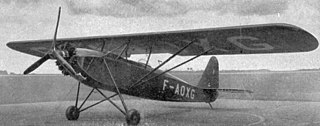
The Salmson Cricri ("Cricket") was a French light aircraft of the 1930s. It was a conventional, parasol-wing monoplane with fixed tailskid undercarriage and seating in tandem open cockpits for the pilot and passenger.
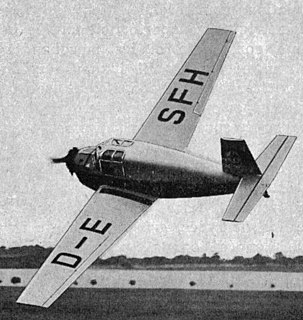
The Siebel Si 202 Hummel ("Bumble-bee") was a German light sportsplane of the late 1930s. It was an angular low-wing monoplane, which could be powered by a variety of small engines.

The PWS-4 was a prototype Polish sports aircraft, developed in 1928 by Podlaska Wytwórnia Samolotów.
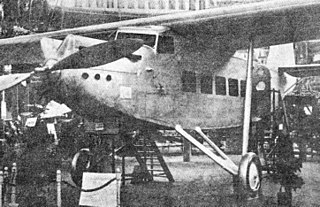
The Dewoitine D.30 was a ten-seat cantilever monoplane built in France in 1930. The D.30 was a single-engine aircraft but the second was completed as a trimotor and redesignated D.31.
The Dewoitine D.35 was a small, single-engine passenger transport aircraft built and flown by Dewoitine in France for their own use in the early 1930s. Only one was produced.

The Morane-Saulnier MS.180 is a single engine, single parasol wing aerobatic trainer designed in France in 1929. About seventeen were produced and used in French flying clubs, some surviving World War II and one remaining in use at a club until the 1970s. Before World War II, some were used by Spanish Republican forces to train pilots in the Spanish Civil War. Two MS.181s are still flying.

The Caudron C.161 was a lightweight French two-seat biplane designed by Caudron for sport or flight training use. A conventional biplane with a square fuselage powered by a 65 hp (48 kW) Salmson radial engine. It had two cockpits in tandem with dual controls in both, when not used as a trainer the controls could be removed from the rear cockpit. A variant, the C.168, with a more powerful 70 hp (52 kW) Anzani radial engine was also available.

The Potez 40 was a French three-engine, braced high-wing monoplane designed and built in response to a French government programme for colonial transport and policing aircraft duties.

The Delanne 11 was a French two seat touring aircraft. Only one was built.

The Dewoitine D.430 was a three-engine, high-wing monoplane designed for policing and other roles in France's colonies. It did not go into production.

The Dewoitine D.480 was a French single engine side-by-side sports and training aircraft built in the early 1930s. Two were completed and flew with several different radial engines. One remained active through the 1950s.

The Nieuport-Delage NiD 740 was a French trimotor monoplane designed to carry night mail. Two were built in 1930.
The Morane-Saulnier MS.300 and MS.301 were French parasol wing introductory trainer aircraft, first flown in 1930. They differed only in engine type. Neither reached production but were developed into two similar trainers, the MS.230 and MS.315, which were made in large numbers.

The Couzinet 20 was a low power, three-engined aircraft designed in France in 1929 for postal duties, though it could have been configured to carry three passengers or as a medical transport. Variants flew with three different engines but only two airframes were completed.

The Mauboussin M.112, M-12 or Mauboussin M.XII was originally called the Peyret-Mauboussin PM XII and was renamed when Mauboussin founded his own company in 1931, ending his partnership with Louis Peyret. It was a French, single-engine, two-seat, low cantilever wing touring monoplane. At least six were built.
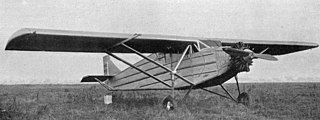
The Aviaméta 92 was a French, all-metal, five seat monoplane built in the late 1920s. Three different engines were fitted, and one example flew the first non-stop Paris-Algiers flight in preparation for an abandoned trans-Atlantic attempt.

The Skraba S.T.3 was a two-seat Polish biplane built in 1928. It was the first all-metal aircraft designed in Poland; only one was completed.
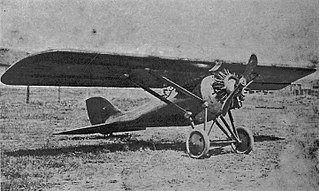
The low-powered Samolot Sp.I, designed in Poland in the mid-1920s, was intended to explore the characteristics of a proposed single seat fighter. The project did not receive government support and only one Sp.1 was built.
| Wikimedia Commons has media related to Dewoitine D.7 . |
{{cite encyclopedia}}: Missing or empty |title= (help)